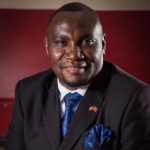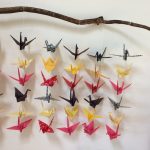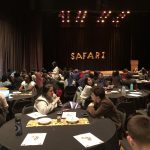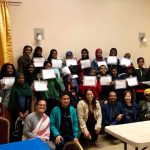Dear future HIUS 144 Students,
I am sure many of you have heard great things about this class and are anticipating a rewarding experience. I am writing this letter specifically for the student who doesn’t know much about this class yet. I was in the same position as you were when I took this class. Since it was the first time that the course was ever taught, there were many kinks that had to be worked out. For example, getting students to the different sites was a little hectic, especially for students who did not have a car. Also, some of the deadlines had to be shifted due to unanticipated issues. However, my overall experience was very positive and I am confident that many of the logistics of this class will be worked out in subsequent years.
Visiting your community site is an exciting and rewarding experience. If you are nervous about whether you will be accepted into the community, you shouldn’t be. All of the community sites are very welcoming. My advice is to be sure to visit your site frequently and to let people know that you are genuinely interested in their community. I know that as students, we are always busy, but if you intend to take this class, you need to be committed to set aside time to do the required fieldwork.
Once you start to visit your community partner, you should immediately look for someone that you find interesting and would like to have a long conversation with, and develop a relationship with them. This person will be your interviewee. More than likely, most of you have never formally conducted an oral history. I too have never done an interview before this class. It may seem stressful at first but it is not difficult to learn how to create questions, how to use the equipment, how to cultivate a relationship with your interviewee, and how to conduct the interview. Don’t worry, the professors and graduate student assistants will be there to guide you every step of the way.
My site was the United Women of East Africa, housed at the East African Community & Cultural Center in City Heights. I mainly participated in the youth workshops that they provided there every other Friday night. I learned so much about youth issues from these workshops—the many disheartening things that some of the East African students have gone through such as facing religious discrimination and racism in school. These kids were as young as six. I also learned about the many issues that the community faced and the history behind the creation of their center. Many members of their community are Muslim and black, and the Center was created in order to provide a safe space for the community youth to keep them from joining gangs, abusing drugs and alcohol, or attempting suicide.
One of my favorite moments was the field trip to Chicano Park. It was wonderful to be away from La Jolla and to witness in person the history of resistance of the Chicanx community in San Diego. I really enjoyed looking at all the murals and thinking about the histories behind them. Another favorite moment is conducting the interview. Through the interview, I got to learn so much more about my interviewee, especially his culture and family. To me, I think that was one of the most rewarding parts of the class. Also, your final is making an art piece from your interview. I created an art piece that features the flag of Uganda, my interviewee’s home country. I was proud to give my art piece to my interviewee.
Personally, I did not have big challenges in the course. I would say that writing down the field notes was one of the most challenging parts of the course. Sometimes I would forget to write them down after my visit and start them after a few days had passed. Consequently, it was hard to remember all of the details from my visit. I recommend that you make time to write down your notes immediately after your visit, such as in your car before driving home or on the bus. Another challenging aspect of the class was the final art project. Just thinking of what to do took a lot of time and brainstorming. The actual process was less thinking and more physical labor that took an ample amount of time. It took me approximately sixteen hours to create but the end project was well worth the time and labor.
In conclusion, I wholeheartedly believe that you will have a memorable time in this class if you decide to put in the effort it asks from you. If you decide to do the minimum and not really understand why what you and your cohort is doing is important, then you will be wasting your time in this class. Think of the big picture, you may not see the effect of your labor immediately but in a few years, you will see the impact that you and students before and after you have made—in the oral histories that you have collected and archived for others to access. I think that this class should continue to be offered since it not only gives you practical research and digital humanities skills that you may utilize again in the future but it also allows you to share an intimate moment with your interviewee by hearing their history and helping them preserve it for posterity.
Best,
Gabriel Lê Espiritu







